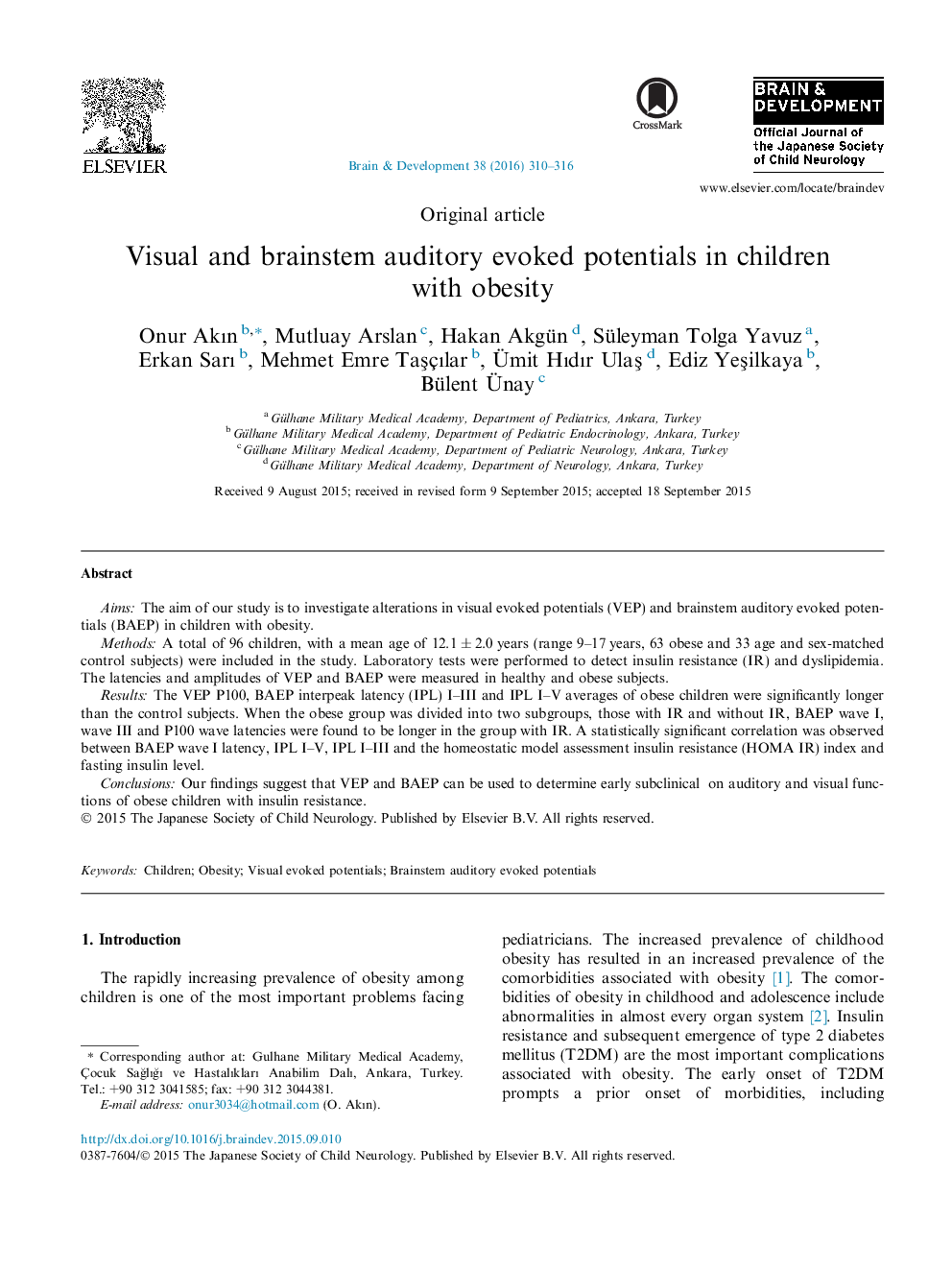| Article ID | Journal | Published Year | Pages | File Type |
|---|---|---|---|---|
| 3036556 | Brain and Development | 2016 | 7 Pages |
AimsThe aim of our study is to investigate alterations in visual evoked potentials (VEP) and brainstem auditory evoked potentials (BAEP) in children with obesity.MethodsA total of 96 children, with a mean age of 12.1 ± 2.0 years (range 9–17 years, 63 obese and 33 age and sex-matched control subjects) were included in the study. Laboratory tests were performed to detect insulin resistance (IR) and dyslipidemia. The latencies and amplitudes of VEP and BAEP were measured in healthy and obese subjects.ResultsThe VEP P100, BAEP interpeak latency (IPL) I–III and IPL I–V averages of obese children were significantly longer than the control subjects. When the obese group was divided into two subgroups, those with IR and without IR, BAEP wave I, wave III and P100 wave latencies were found to be longer in the group with IR. A statistically significant correlation was observed between BAEP wave I latency, IPL I–V, IPL I–III and the homeostatic model assessment insulin resistance (HOMA IR) index and fasting insulin level.ConclusionsOur findings suggest that VEP and BAEP can be used to determine early subclinical on auditory and visual functions of obese children with insulin resistance.
